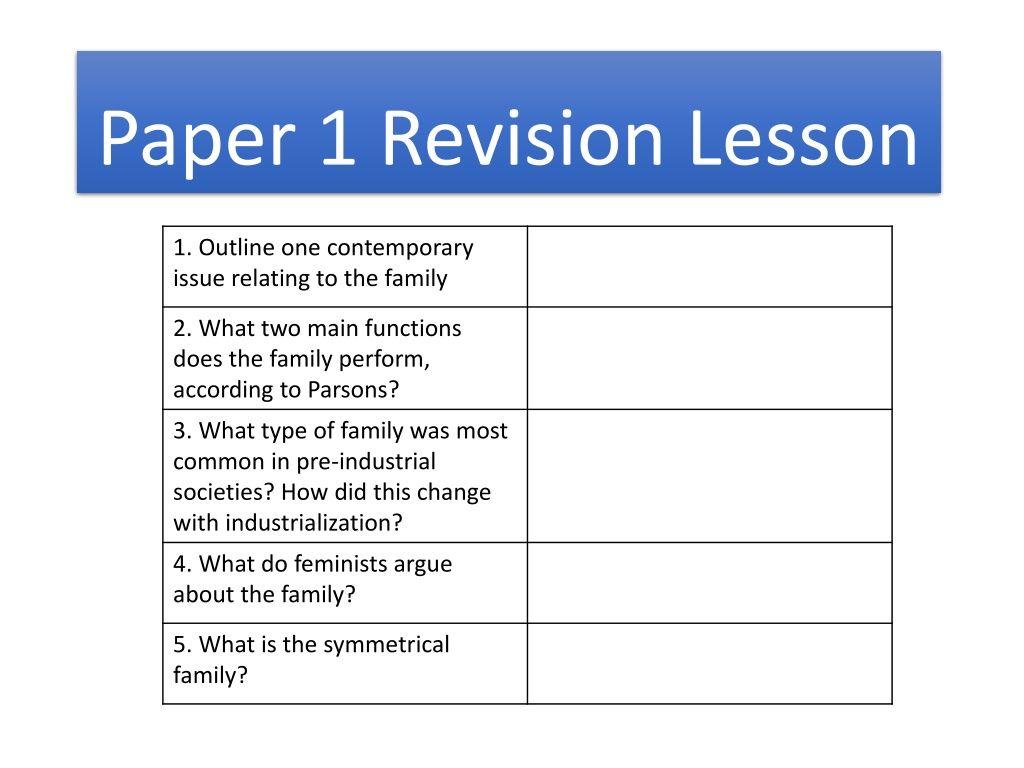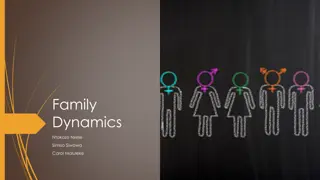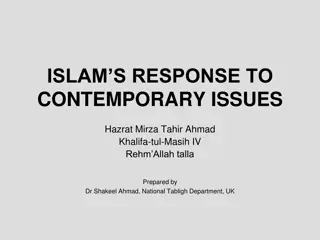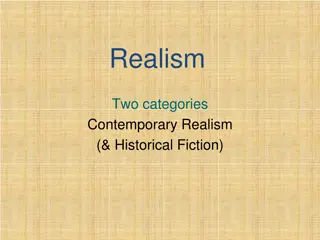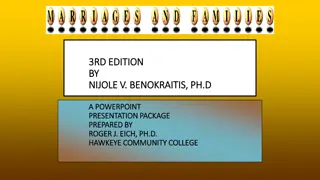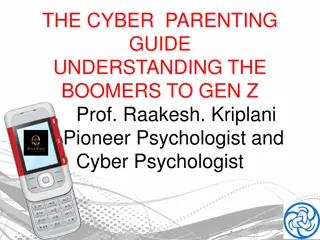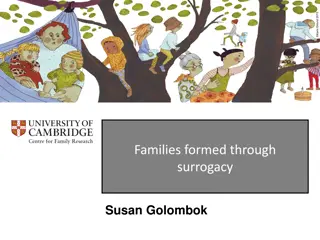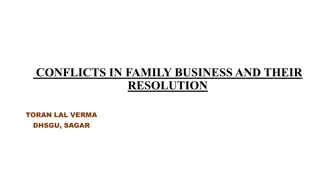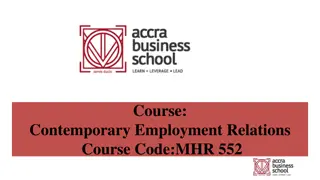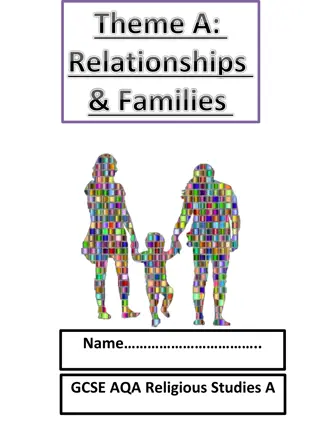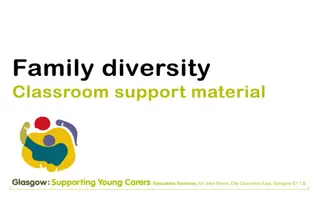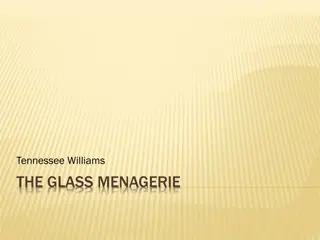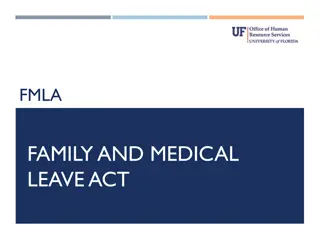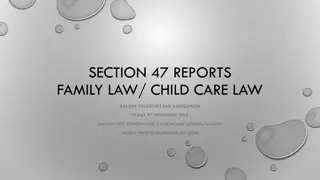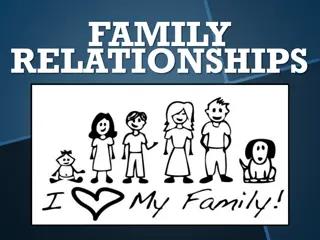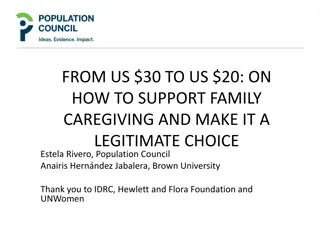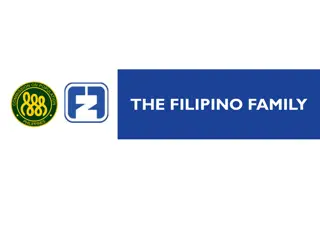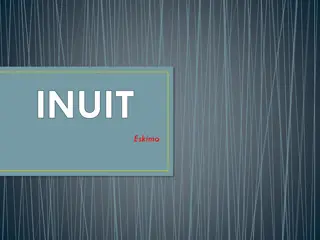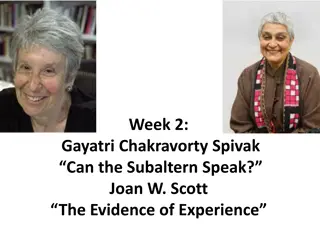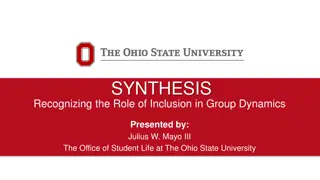Contemporary Issues in Family Dynamics
Understanding the contemporary issues surrounding family dynamics, this piece delves into topics such as changing conjugal roles, diverse family structures, functions of the family according to different sociological perspectives, and the impact of societal changes on marriages and divorces. It discusses the evolution of families from pre-industrial to industrialized societies and explores the factors contributing to the rise of lone-parent families and declining birth rates.
Download Presentation

Please find below an Image/Link to download the presentation.
The content on the website is provided AS IS for your information and personal use only. It may not be sold, licensed, or shared on other websites without obtaining consent from the author. Download presentation by click this link. If you encounter any issues during the download, it is possible that the publisher has removed the file from their server.
E N D
Presentation Transcript
Paper 1 Revision Lesson 1. Outline one contemporary issue relating to the family 2. What two main functions does the family perform, according to Parsons? 3. What type of family was most common in pre-industrial societies? How did this change with industrialization? 4. What do feminists argue about the family? 5. What is the symmetrical family?
Different types of family and diversity 1. What is a reconstituted family? Key study: Rapoport and Rapoport (1982) used secondary sources in their pioneering research and identified five types of diversity: 2. What is beanpole family? Organisational 3. How does a family differ to a household? Cultural 4. Give one example of cultural diversity Social class 5. What is a commune? Life course 6. Give three reasons for the increase in family diversity Cohort (life- cycle)
Functions of the family Key study Functions of family Criticisms Functionalists Marxists Feminists
Conjugal roles 1. What is the difference between joint and segregated conjugal roles? Using a questionnaire survey delivered as a face to face interview, Young and Wilmott (1973) found the key features of the symmetrical family are: 1. 2. How have conjugal roles changed? 2. 3. What is the difference between the expressive and instrumental roles? 3. However, feminists criticize this ideas as they argue 4. What is the symmetrical family? Oakley (1982) defines a conventional family as a nuclear family with a married couple and children who live together. 5. Give two reasons for this shift. She argues the nuclear family is unequal because She argues the conventional family is becoming less common but is still 6. Give one reason power may be unequally distributed in the family. She argues the nuclear family can be problematic because .
Changes in the family 1. How has the position of children changed since the Victorian era? Pre- industrial families 2. How have parent-child relationships changed? Why? 3. What is the principle of stratified diffusion? Industrialised families 4. Outline three contemporary issues relating to families 5. Why is the birth rate declining? Give three reasons. Contemporary families 6. Why are lone-parent families increasing?
Marriage and divorce 1. Give two reasons why marriage is declining Changing patterns of marriage: 1. Decline in marriage 2. People getting married later 3. Introduction of same-sex marriage 4. Increase in cohabitation 5. Increase in birth outside of marriage 2. Explain why secularisation may have led to an increase in divorce Reasons for increased divorce: 1. Feminism and changing role of women 2. Legal changes eg 1969 Divorce Reform Act 3. Changing attitudes 4. Too high expectations of marriage from media 5. Secularisation 3. What do feminists think about divorce? 4. What do functionalists think about divorce? 5. Outline one positive consequence of divorce. Monogamy: Bigamy: Serial monogamy: Polygamy: Polygyny: Polyandry: 6. Outline two negative consequences of divorce.
Families Section 1. Multiple choice 2. Multiple choice 3. Describe (3) 4. Identify and describe (3) 5. From the item, identify one weakness/ strength (2) 6. From the item, identify and explain (4) 7. Identify and explain (4) 8. From the item, identify and describe including what 9. Identify and explain (4) 10. Discuss how far sociologists agree (12) 11. Discuss how far sociologists agree (12)
Exam practice Exam practice 1. 2. Describe the symmetrical family (3) Identify and describe one function of the family according to feminists (3) Identify one strength of using official statistics to study trends in divorce (2) Identify one factor which could have led to the increase in divorce identified in the item and explain why (4) Identify and explain one strength of using unstructured interviews to investigate family relationships (4) Identify and describe one function of the family according to Parsons including what you know of his perspective on the family (4) Identify one ethical issue you may face when investigating arranged marriage and explain how you would deal with it in your research (4) Discuss how far sociologists agree the family is less important in today s society (12) Discuss how far sociologists agree changing gender roles is the main reason for the increase in divorce (!2) 3. 4. 5. 6. 7. 8. 9.
3-mark questions 1. Describe the symmetrical family (3) The symmetrical family is Another feature is Young and Wilmott argue 2. Identify and describe one function of the family according to feminists (3) One function of the family according to feminists is They argue the family This happens through
4-mark questions 1. Identify one factor which could have led to the increase in divorce identified in the item and explain why (4) 2. Identify and explain one strength of using unstructured interviews to investigate family relationships (4) - - - Identify the factor (1) Explain the factor (1) Explain the impact on divorce (2) - - - Identify the strength (1) Explain the strength (1) Explain why this would make the method useful for investigating family relationships (2)
4-mark questions 1. Identify and describe one function of the family according to Parsons including what you know of his perspective on the family (4) Identify the function One function of the family according to Parsons is primary socialisation, when children learn the norms and values of society in early childhood. He argues from a functionalist perspective that the family performs two positive functions: stabilisation of the adult personality as well as primary socialisation. This means the family provides comfort to adults. By doing this, the family helps to keep society harmonious and stable as children are socialised into key values. Mention his perspective Give overall view of families and some more detail 2. Identify one ethical issue you may face when investigating arranged marriage and explain how you would deal with it in your research (4) One ethical issue is This means I would deal with this by This is important when investigating arranged marriage because
12-mark questions Discuss how far sociologists agree changing gender roles is the main reason for the increase in divorce (12) Discuss how far sociologists agree the family is less important in today s society (12) Thesis: Thesis: 1. 1. 2. 2. 3. 3.
Role of education Functionalist perspective Marxist perspective Function Explanation Function Explanation Passing on shared values (Durkheim) Creates obedient workers (Bowles and Gintis) Passes on social class inequalities Teaching specific knowledge and skills for work (Durkheim) Passes on values of the ruling class Bridging particularistic and universalistic standards (Parsons) Breeds competition Role allocation (Parsons) Criticisms: Criticisms:
Different types of school What are independent (private) schools? 11+ exam: Grammar Secondary modern Secondary technical Tripartite system 1944 How do they differ to state schools? Comprehensive schools (all students accepted) Comprehensi ve system 1965 Comprehensives Academies Free Schools Faith Schools Modern education system What are advantages of private schools? Home schooling Alternative Educational provision What are the disadvantages of private schools? Deschooling
Social class and education Trends in class and education Halsey, Heath and Ridge (1980) looked at social class origins and destinations of a large sample of men. A boy from the service class (upper class) was 11 times more likely to go to university than a working class boy. Sociologists Explanation Factor Material deprivation Parental values/ involvement Cultural capital Marketisation
Internal processes Interactionism Sociologists Explanation Factor Labelling Streaming and setting Ball Self-fulfilling prophecy Pupil subcultures Willis
Ethnicity and education Trends in ethnicity and education Chinese and Indian students = likely to overachieve Caribbean and Pakistani students = likely to underachieve Sociologists Explanation Factor Material deprivation Parental values/ involvement Cultural factors Ethnocentric curriculum Teacher labelling Institutional racism
Gender and education Reasons for differences in gendered subject choice: Trends in gender and education Girls outperform boys at GCSE and A-level, having overtaken boys. However, the gap has started to narrow. There are still significant gender differences in subject choice. Explanation Factor Feminism and changing gender roles Legal changes and policies National curriculum Feminisation of education Feminists argue the education system in still patriarchal. Crisis of masculinity Anti-school subcultures
Exam practice 1. 2. Describe the marketization of education (3) Identify and describe one school-based factor that could influence students performance (3) Identify one strength of using official statistics to investigate gender differences in attainment (2) Identify one factor which could have led to girls improved educational achievements (4) Identify one factor affecting ethnic differences in attainment and explain how you would investigate it using postal questionnaires (4) Identify and describe the research method used by Willis, including what you know of his perspective on education (4) Identify one ethical issue you may face when investigating labelling and explain how you would deal with it in your research (4) Discuss how far sociologists agree the main function of education is to serve the needs of the economy (12) Discuss how far sociologists agree gender differences are the main inequality in educational achievement (!2) 3. 4. 5. 6. 7. 8. 9.
3-mark questions Describe the marketization of education (3) The marketization of education is This means that An example is Identify and describe one school-based factor that could influence students performance (3) One school-based factor is This is when This could impact pupil performance by
4-mark questions 1. Identify one factor which could have led to girls improved educational achievements (4) 2. Identify one factor affecting ethnic differences in attainment and explain how you would investigate it using postal questionnaires (4) - - - Identify the factor Explain the factor Explain how and why the factor has led to improvements for girls One factor affecting ethnic differences in attainment is teacher labelling. Firstly, I would select a sample of teachers to research. Secondly, I would write a questionnaire asking them about their treatment of pupils of different ethnicities. Then I would send out the questionnaires. Finally, I would analyse the responses to identify any trends and write up my findings.
4-mark questions 1. Identify and describe the research method used by Willis, including what you know of his perspective on education (4) 2. Identify one ethical issue you may face when investigating labelling and explain how you would deal with it in your research (4) The research method Willis used was From a _________ perspective, he studied He found that This shows One ethical issue you may face is This means I would deal with it by . This is particularly important in investigating labelling because
12-mark questions Discuss how far sociologists agree gender differences are the main inequality in educational achievement (12) Discuss how far sociologists agree the main function of education is to serve the needs of the economy (12) Thesis: Thesis: 1. 1. 2. 2. 3. 3.
